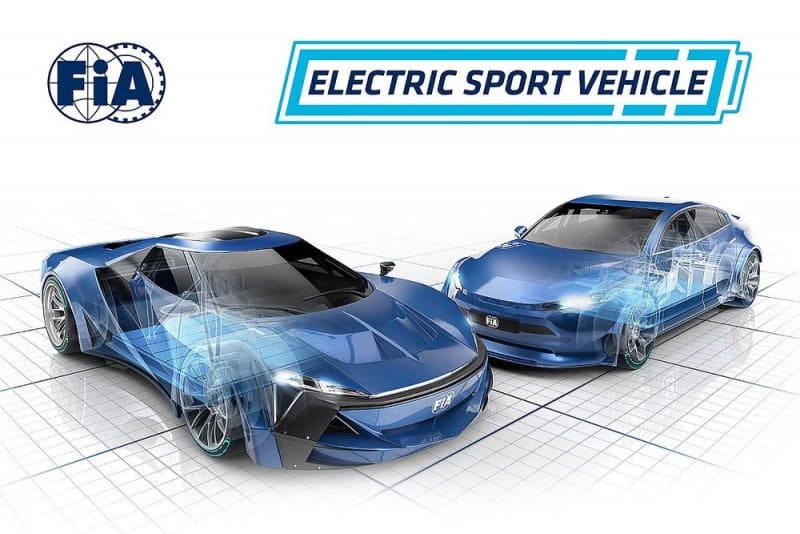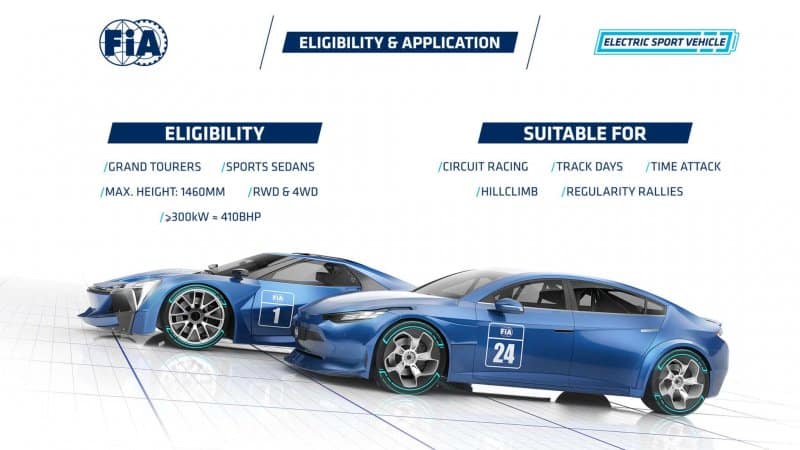The FIA has introduced the new Electric Sport Vehicle class which they equate with being in the spirit of Group N, but it looks like the FIA Electric GT Championship is not happening any time soon.
In addition to ESV, I look at how the new all-electric Scalar SCR1 performed on track recently, F1’s plans for a sustainable paddock power station, how Formula E beat their speed record in Portland and Christian Horner’s solution to the tire blanket issue.
All this and more in this week’s Sustainable Motorsport Roundup on Motorsport Prospects. Its sustainable news racers can use.
Sustainable Motorsport News

The FIA has launched a new entry-level electric GT category for electric vehicles closely based on production machinery. “The category to be known as Electric Sport Vehicle will be open to GT machinery and what the governing body is describing as “coupe-shaped sports sedans” with a minimum power output of 300kW (402bhp) in standard form. ESV has been conceived in the spirit of the long-standing Group N production category to allow electric vehicles to be incorporated into existing competitions, including racing and against-the-clock hillclimb and sprint events at national and regional levels.”

Marek Nawarecki, FIA director of circuit sport, said: “The FIA ESV revives the spirit of Group N, where a car purchased at a dealership, fitted with all the necessary safety equipment, was essentially competition-ready and suitable for various disciplines and formats.”


Lutz Leif Linden, FIA GT Commission President, said: “The FIA ESV ruleset very much responds to the demands of the market. Having this set of technical regulations will allow the manufacturers’ customer racing departments to offer competition-ready variants of their electric cars, which should be a considerable source of revenue of them, much like GT3 is. It can even open the door for them to create their own one-make series. The fact that the regulations are inclusive and accommodate four-door cars reflects the latest trends on the road car market. We already see several manufacturers having sporty four-door grand coupes in their line-ups.”
Interestingly, according to Autosport, the FIA Electric GT Championship that was supposed to kick off this year is completely separate and on the back burner. “It was conceived to create machinery with GT3 levels of performance for a series that was initially set to kick off this year with a series of pilot races. The plan failed to gain traction with manufacturers and remains on the back burner.”
The FIA has awarded Marelli Motorsport with the Three Stars of the FIA Environmental Accreditation Program. “This recognition, which is the highest level of the programme, demonstrates the commitment of Marelli Motorsport to best practices and continual improvement through the implementation of an effective environmental management system.”
Silverstone Circuit has signed a sustainability-focused partnership with US-headquartered bank Santander. The bank will supply fleet of zero or low emission vehicles through Santander Consumer Finance. The new fleet will be used for on-site mobility, event operations and on-track safety and rescue requirements. Santander Cycles scheme will also be rolled out at the track, with e-bikes available to employees.
Stuart Pringle, managing director of Silverstone, said: “As the home of British motorsport we have a responsibility to lead the way with smarter and cleaner methods of working and sustainability is now at the heart of all we do at Silverstone. I am delighted to be partnering with Santander as we continue on our Shift to Zero and introduce these initiatives to help us on our journey.”
Sustainable Motorsport Tech

The video above is a recap of how the SCR1 All-Electric touring Race Car made history at the recent HyperFest Weekend.
Red Bull team principal Christian Horner has proposed an alternative solution to F1’s planned tire blanket ban from next year. “Everybody has tyre blankets, they do the job. I think what we should be looking at is sustainable ways of powering those tyre blankets as opposed to removing them.” Of course, this does not change the fact that these tire warmers would still have to be shipped around the world with the teams…
Series News
A lot of interesting news has emerged from Formula E since last weekend’s Portland Eprix. First of all, while Formula E co-founder and CCO Alberto Longo explained why the series is racing in Portland, the teams were breaking new speed records at the track. “The Jaguar TCS Racing of Mitch Evans hit a 171.9mph top speed on his final flying lap of the session, an impressive stat to accompany Jaguar’s Sam Bird who also became the first driver to break a speed of 275km/h (171mph) for the first time Formula E history.”
More importantly though was the business side of Formula E and what was being done to increase the visibility of the series, especially in the United States. Here are a few articles that look at where the series stands and what they intend to do about it.
- Formula E looks to regain momentum lost during pandemic (Sports Business Journal)
- Formula E CEO Jeff Dodds Sees Sustainable Future for Electric Racing Series (AutoWeek)
- Why Formula E Struggles to Attract Major US Car Manufacturers (AutoWeek)
- ‘We want to create a home in the US’: Formula E signs three-year media rights deal with CBS and Roku (Blackbook Motorsport)
Formula 1 is to trial its own energy-efficient paddock power station at this weekend’s Austrian Grand Prix in a bid to dramatically cut carbon emissions. “Our estimation is that in 2022, there were around 200 tonnes of CO2 produced [at the Austrian Grand Prix],” he explained. “We’re looking at, subject to receiving that data, to reduce that to around 10 tonnes of CO2.”
McLaren CEO Zak Brown has called on F1 and the FIA to level the playing field with regard to an area of the sport he feels has left the teams with an impossible choice. “Our sport needs a clear regulatory framework with financial, technical and sporting regulations that better enable us all to innovate and invest in sustainability. And if we want to achieve a step change with the new set of 2026 regulations, then those decisions need to be made now.”
The Chinese Formula 4 championship is planning to switch from its first-generation Mygale car to the manufacturer’s second-generation chassis next year, and to introduce hybrid components. “MiTime Sports said their Mygales will be fitted with a 48-volt mild-hybrid system and also a Kinetic Energy Recovery System. KERS was introduced in Formula 1 in 2009 and involves recovering energy from braking that is usually lost as heat by ‘translating’ it into electrical energy and then storing it for later use.”

